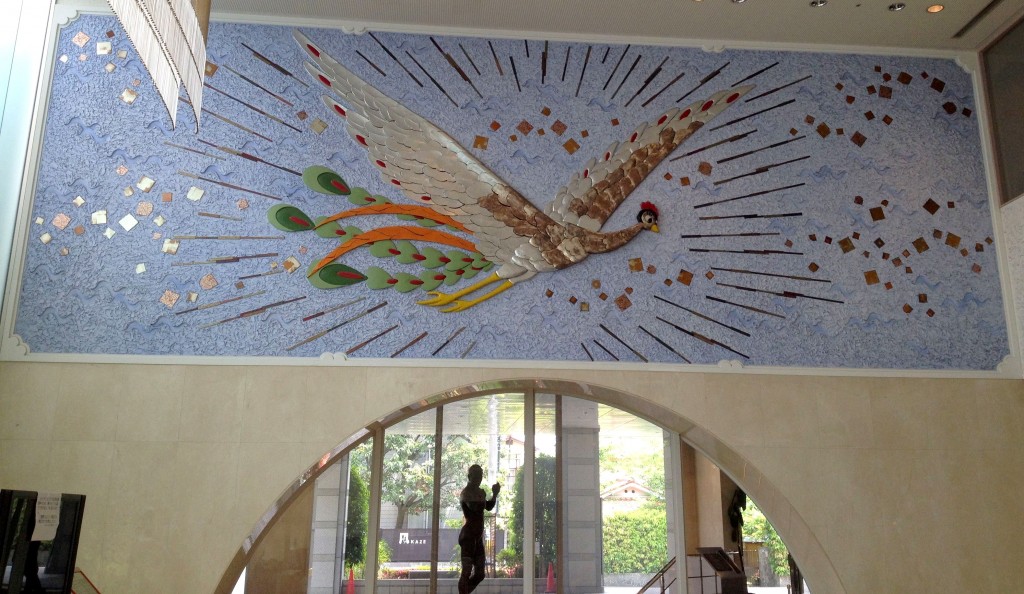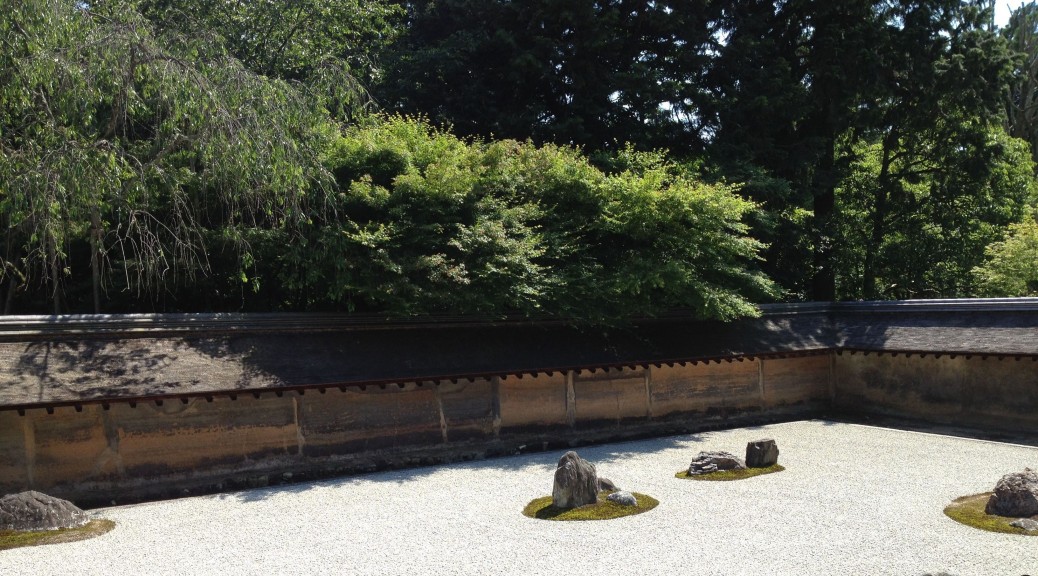For our last full day in Japan, the group headed Northwest to the other side of Kyoto—near Kinkakuji, the Temple of the Golden Pavilion made famous to Western readers by Yukio MISHIMA—to start our peace-related activities. We took a bus to the end of the line, disembarking in front of Ritsumeikan University. Around the corner we found Ritsumeikan’s Kyoto Museum for World Peace.

Credit: McGehee
This museum is quite large, and it stands out from the other museums because of its more global scope, its willingness to be more critical of American military activity, and its extending its focus to a wide range of military and other conflicts that are barriers to peace. In its stated mission to fulfill its social responsibility to promote the development of a peaceful society, the museum’s website declares, “We need to eliminate not only the causes of conflict, but also all barriers to human development so that we can build a peaceful society in which human potential can blossom.” The museum helped put the work the students had been doing over their time in Japan into a more global, current, social-justice-oriented context.
We met to discuss these experiences over kaitenzushi, or conveyor-belt sushi, an eating highlight of the trip.
Then we set off on foot to Ryoanji, a Rinzai Zen Buddhist temple famous for its dry-style “Zen rock garden.” While Zen is the more popular form of Buddhism known to Westerners, it is not the most common or popular in Japan, so Ryoanji provided a nice opportunity for the students to visit a temple affiliated with the kind of Buddhism most of them might have imagined. Despite being popular with tourists, the temple still manages to cultivate a reflective, if not totally meditative, experience. After pondering how “form is emptiness” and “emptiness is form” at the rock garden, the students were able to tour the temple structure as well as the trails through its lovely grounds, which featured many other kinds of traditional Japanese landscaping, including a large pond. The calming experience offered a salve to our road-weary souls, and we returned to downtown Kyoto visibly refreshed.
Our closing dinner allowed us to sit at one long communal table in a traditional Japanese restaurant room. We offered thanks for one another, and Profs. A. and M. gave formal thanks to Becky Henkind, our assistant leader, who had gone above and beyond daily to keep the trip running smoothly, to keep the lines of communication open, and to inspire her peers to appreciate the amazing opportunity that is Global Connections.
Our dinner reservation had been especially early, so we let the students have some time to enjoy their last night in Kyoto before meeting at the hostel for our closing seminar. Some of us took a detour to Kyoto Tower to compare notes with the other high places from which we’d surveyed our cities.
The night then provided us a chance to reflect on the trip as a whole, how it had changed us, what work was still to be done. We sat on the rooftop of our hostel, under the stars, enjoying a last night together before our paths diverged.
The next day, it was a sad goodbye at the Kansai airport in Osaka, as part of the group stayed in country, part traveled to China and Korea, and part went back to various ends of the United States. Prof. M escorted the students returning to the U.S. while Prof. A stayed in Japan for ongoing research and some family travel. After lunch together as a group, we went our separate ways.
We are grateful for the honor of having spent this time together.
Please see the links along the top for more information about the program and its leaders as well as helpful links!









